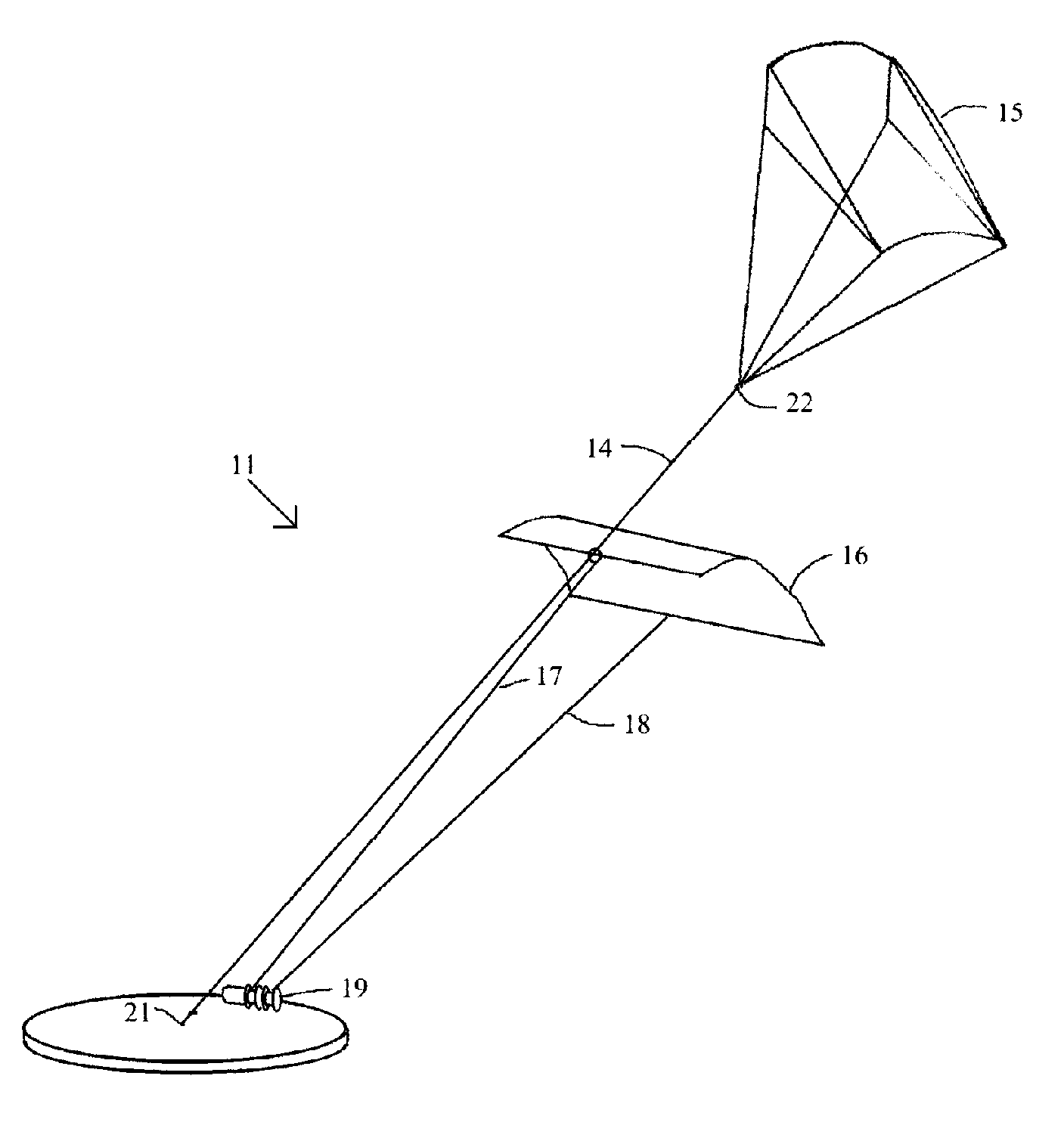Aerialwind power generation system and method
a power generation system and wind turbine technology, applied in the direction of electric generator control, machines/engines, transportation and packaging, etc., can solve the problems of increasing the need for cost competitive methods and apparatuses for harnessing renewable energy sources, increasing the and increasing the capital cost of wind turbines relative to power generated, so as to increase the power generated
- Summary
- Abstract
- Description
- Claims
- Application Information
AI Technical Summary
Benefits of technology
Problems solved by technology
Method used
Image
Examples
Embodiment Construction
[0044]Referring now to FIG. 1, an aerial wind power generation system 11 embodying features of the present invention includes a first guide line 14, a first support body 15, a driven element 16, a first tow line 17, a second tow line 18 and a means for generating power 19. The first guide line 14 has a first end 21 that is tethered at the ground or to a structure, and the first guide line 14 extends skywardly at a selected elevation angle to a spaced second end 22 that is attached to the first support body 15. The first support body 15 is an aircraft that is lifted by the wind, such as a kite as shown, or a lighter than air aircraft, such as a blimp or a balloon. Preferably the lift of the first support body 15 can be varied to maintain the elevation angle of the first guide line 14.
[0045]The driven element 16 is slidably attached or mounted on the first guide line 14. The driven element 16 is a kite, sail, airfoil or other element that generates both drag and lift from the wind. Th...
PUM
 Login to View More
Login to View More Abstract
Description
Claims
Application Information
 Login to View More
Login to View More - R&D
- Intellectual Property
- Life Sciences
- Materials
- Tech Scout
- Unparalleled Data Quality
- Higher Quality Content
- 60% Fewer Hallucinations
Browse by: Latest US Patents, China's latest patents, Technical Efficacy Thesaurus, Application Domain, Technology Topic, Popular Technical Reports.
© 2025 PatSnap. All rights reserved.Legal|Privacy policy|Modern Slavery Act Transparency Statement|Sitemap|About US| Contact US: help@patsnap.com



